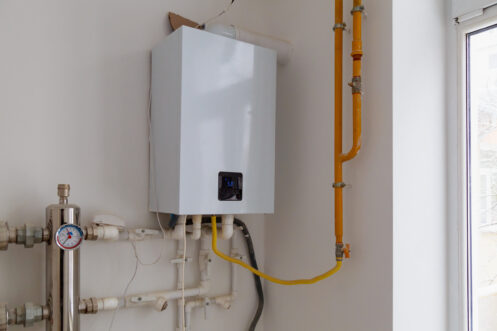Steps on How to Maintain Your Home's Hot Water System Properly
Steps on How to Maintain Your Home's Hot Water System Properly
Blog Article
The article author is making a few great pointers regarding How to Maintain Your Water Heater & Prolong its Life as a whole in the content followed below.

Warm water is essential for day-to-day convenience, whether it's for a revitalizing shower or cleaning dishes. To ensure your warm water system runs successfully and lasts much longer, normal maintenance is essential. This post provides useful tips and insights on just how to keep your home's hot water system to prevent interruptions and pricey repairs.
Introduction
Maintaining your home's hot water system may appear overwhelming, but with a few basic actions, you can guarantee it runs efficiently for many years to find. This overview covers whatever from comprehending your hot water system to DIY upkeep pointers and recognizing when to call specialist aid.
Relevance of Preserving Your Hot Water System
Regular upkeep not just expands the life expectancy of your hot water system however also ensures it runs successfully. Ignoring upkeep can result in decreased efficiency, greater energy bills, and also early failure of the system.
Indications Your Hot Water System Demands Upkeep
Understanding when your hot water system needs focus can stop major issues. Look out for indicators such as inconsistent water temperature, strange noises from the heating system, or corroded water.
Comprehending Your Hot Water System
Before diving into maintenance jobs, it's handy to recognize the fundamental components of your hot water system. Typically, this consists of the hot water heater itself, pipelines, anode rods, and temperature controls.
Monthly Upkeep Tasks
Normal regular monthly checks can assist catch small problems prior to they rise.
Flushing the Water Heater
Flushing your hot water heater gets rid of sediment buildup, improving efficiency and prolonging its life.
Monitoring and Replacing Anode Rods
Anode poles stop corrosion inside the container. Examining and changing them when worn is vital.
Inspecting and Readjusting Temperature Settings
Readjusting the temperature setups guarantees optimal efficiency and security.
DIY Tips for Upkeep
You can carry out several upkeep tasks on your own to maintain your hot water system in top problem.
Checking for Leakages
Routinely evaluate pipes and links for leakages, as these can result in water damages and higher expenses.
Testing Pressure Alleviation Valves
Testing the stress safety valve ensures it operates appropriately and prevents extreme stress buildup.
Protecting Pipelines
Insulating hot water pipelines reduces warm loss and can conserve energy.
When to Call an Expert
While do it yourself upkeep is useful, some concerns require expert know-how.
Complicated Problems Calling For Professional Assistance
Instances consist of major leaks, electric issues, or if your hot water heater is consistently underperforming.
Routine Expert Upkeep Conveniences
Professional maintenance can include detailed examinations, tune-ups, and ensuring conformity with safety standards.
Final thought
Routine upkeep of your home's warm water system is essential for efficiency, durability, and expense financial savings. By adhering to these pointers and knowing when to seek professional help, you can guarantee a trustworthy supply of hot water without unforeseen interruptions.
How to Maintain an Instant Hot Water Heater
Before tinkering with your hot water heater, make sure that it’s not powered on. You also have to turn off the main circuit breaker and shut off the main gas line to prevent accidents. Also turn off the water valves connected to your unit to prevent water from flowing into and out of the appliance. 2. When you’re done, you have to detach the purge valves’ caps. These look like the letter “T†and are situated on either side of the water valves. Doing so will release any pressure that has accumulated inside the valves while at the same time avoid hot water from shooting out and burning your skin. 3. When the purge valves’ caps are removed, you have to connect your hosing lines to the valves. Your unit should have come with three hoses but if it didn’t, you can purchase these things from any hardware or home repair shops. You can also get them from retail stores that sell water heating systems. Read the user’s manual and follow it to complete this task properly. When the hosing lines are connected, open the purge port’s valves. 4. You should never use harsh chemical cleaners or solutions when cleaning your unit. Make use of white vinegar instead. It should be undiluted and you’ll probably use about 2 gallons. 5. Now flush your water heater. This task should probably take about 40 minutes. We can’t give you specific directions for this because the procedure is carried out depending on the type, model and brand of your heater. With that being said, refer to the user’s manual. 6. When you’re done draining the unit, you have to turn off the purge port valves again. Remove the hosing lines that you earlier installed on each of the water valves. Put the valve caps (purge port) back in their respective places and be very careful so as not to damage the rubber discs that are found inside these caps. 7. Now that everything’s back in place, check your user’s manual again to find out how to reactivate your water heating system. 8. Once it is working, turn one of your hot water faucets on just to let air pass through the heater’s water supply pipes. Leave the tap on until water flows smoothly out of it. https://www.orrplumbing.com/blog/2014/september/how-to-maintain-an-instant-hot-water-heater/

As a passionate person who reads about How to Maintain Your Water Heater & Prolong its Life, I assumed sharing that short article was a great idea. So long as you appreciated our blog entry if you please remember to pass it around. We enjoy your readership.
Click Here Report this page